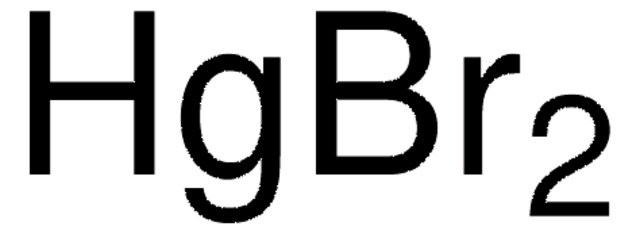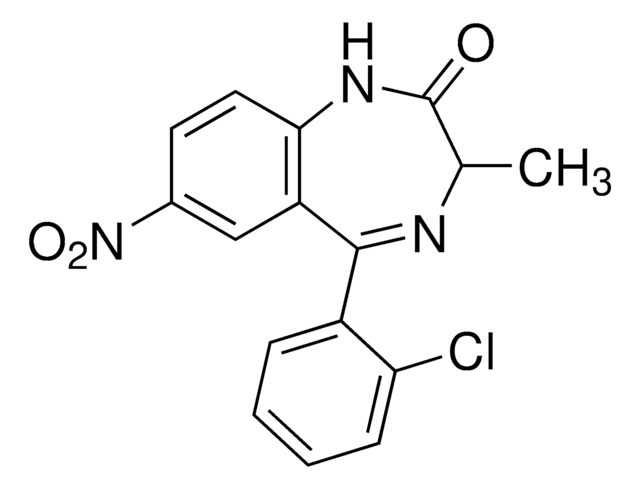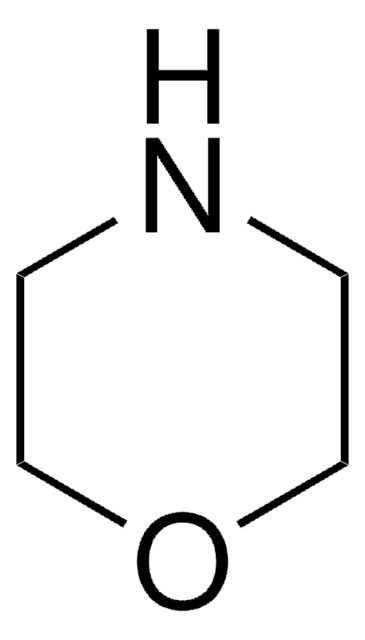83353
Mercury(II) bromide
puriss. p.a., ACS reagent, ≥99.0% (precipitation titration)
Sinônimo(s):
Mercuric bromide
About This Item
Produtos recomendados
grau
ACS reagent
puriss. p.a.
Nível de qualidade
pressão de vapor
1 mmHg ( 136.5 °C)
Ensaio
≥99.0% (precipitation titration)
Formulário
powder or crystals
resíduo de ignição (após redução)
≤0.02%
p.e.
322 °C (lit.)
pf
236 °C (lit.)
traços de ânion
chloride (Cl-): ≤2000 mg/kg
sulfate (SO42-): ≤50 mg/kg
traços de cátion
Ca: ≤10 mg/kg
Cd: ≤5 mg/kg
Co: ≤5 mg/kg
Cr: ≤5 mg/kg
Cu: ≤5 mg/kg
Fe: ≤5 mg/kg
K: ≤50 mg/kg
Mg: ≤5 mg/kg
Mn: ≤5 mg/kg
Na: ≤50 mg/kg
Ni: ≤5 mg/kg
Pb: ≤5 mg/kg
Zn: ≤5 mg/kg
cadeia de caracteres SMILES
Br[Hg]Br
InChI
1S/2BrH.Hg/h2*1H;/q;;+2/p-2
chave InChI
NGYIMTKLQULBOO-UHFFFAOYSA-L
Procurando produtos similares? Visita Guia de comparação de produtos
Descrição geral
Palavra indicadora
Danger
Frases de perigo
Declarações de precaução
Classificações de perigo
Acute Tox. 1 Dermal - Acute Tox. 1 Inhalation - Acute Tox. 2 Oral - Aquatic Acute 1 - Aquatic Chronic 1 - STOT RE 2
Código de classe de armazenamento
6.1B - Non-combustible acute toxic Cat. 1 and 2 / very toxic hazardous materials
Classe de risco de água (WGK)
WGK 3
Ponto de fulgor (°F)
Not applicable
Ponto de fulgor (°C)
Not applicable
Escolha uma das versões mais recentes:
Certificados de análise (COA)
Lamentamos, não temos COA para este produto disponíveis online no momento.
Se precisar de ajuda, entre em contato Atendimento ao cliente
Já possui este produto?
Encontre a documentação dos produtos que você adquiriu recentemente na biblioteca de documentos.
Nossa equipe de cientistas tem experiência em todas as áreas de pesquisa, incluindo Life Sciences, ciência de materiais, síntese química, cromatografia, química analítica e muitas outras.
Entre em contato com a assistência técnica











